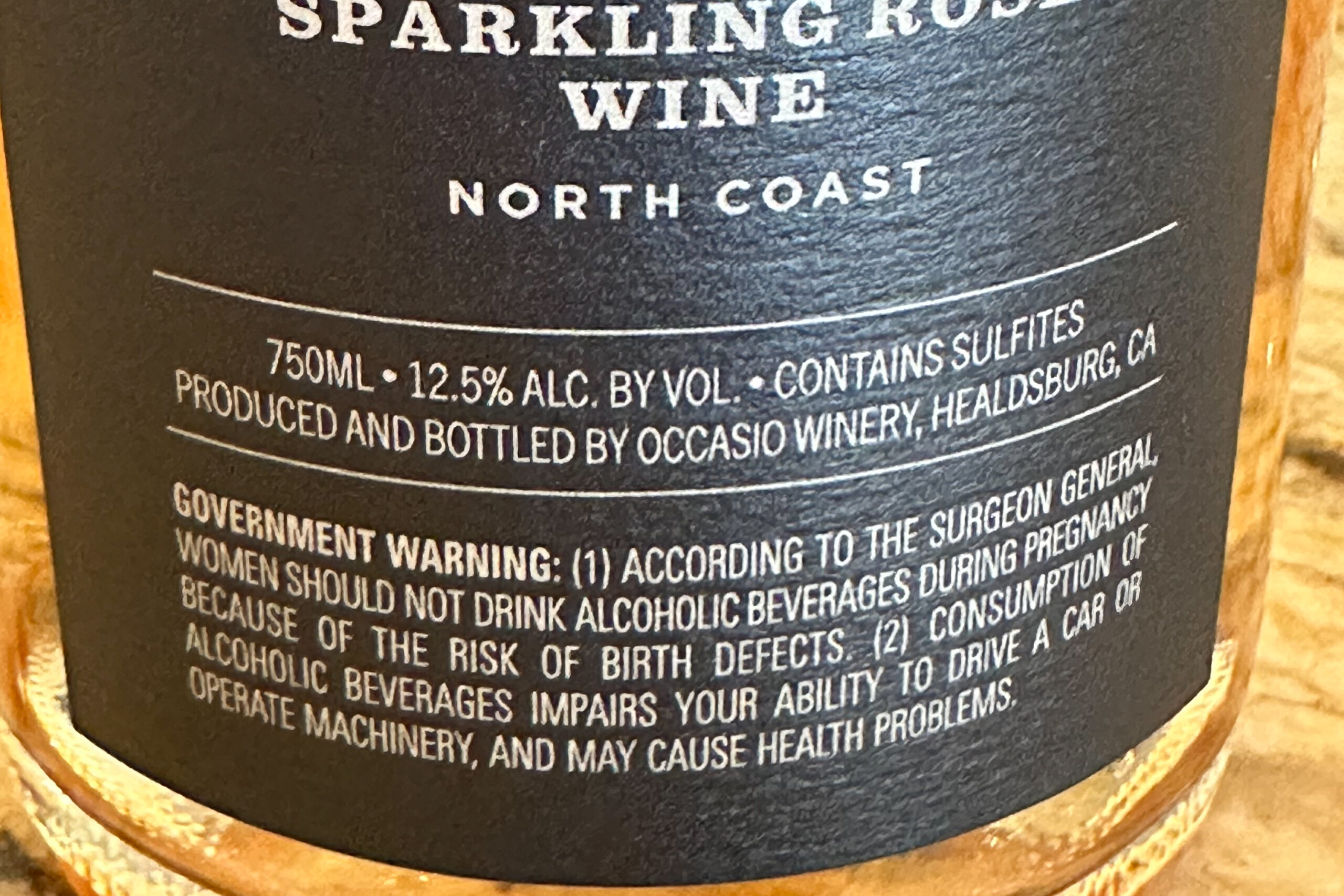What’s Really in My Wine Glass? The Push for Transparency on Labels

My thoughts on ingredient labeling for wine started swirling this year when California introduced a new law requiring bottle recycling labels on all wine and spirits sold in the state.
Beginning in 2024, every bottle will need to display “CA CRV” along with the refund value.
At first glance, stamping 5 extra letters on a label seems simple enough. But the underlying recycling regulations that go along with this change – like registering with the state, setting up a new cost sharing system, and detailed reporting – will create more than a minor distraction for small, family-owned wineries and distilleries that struggle with limited staff.
And it got me thinking, if just adding a recycling logo can impact business operations, how much more of a challenge would full ingredient labeling requirements introduce? Especially when California is home to so many amazing craft producers without big budgets or personnel dedicated to regulatory compliance.
So, when I started hearing whispers that ingredient labeling for wine and spirits might become mandatory in more places, following recent EU laws, I knew this would kick up quite a debate…
Walk down the grocery store aisles and you’ll see nutritional facts and ingredient lists on almost everything – from soda to bread to frozen dinners. But curiously absent from this labeling are alcoholic beverages like wine, beer, and spirits.
In the EU, that’s beginning to change with new regulations taking effect. And some wonder if similar rules will make their way to the US soon.
As a wine enthusiast, I’m torn. I can certainly see merits to providing consumers with more transparency. But as a lover of small wineries and craft distilleries, I also worry about the burden that more red tape could place on them.
On the pro side, ingredient lists would allow people with allergies to make safer choices. A vegan could avoid fining agents like isinglass (fish bladder), for example. It would also clear up the misconception that wines contain added sugars when the reality is that most wines are dry.
But simply reading “grapes, yeast, sulfites” on a label doesn’t really tell me more about wine quality or flavor. A wine with 20 obscure additives may score higher with critics than one with just grapes and yeast. More information doesn’t always equate to useful information.
There’s also the issue of seasonal variability. The ingredients in beer and natural wines can change from batch to batch. Keeping labels up-to-date would be burdensome, especially for small lot producers.
For mass-market Monster Wines Corp, rolling out new labeling would be an easy pivot. But for small family vineyards producing a few thousand cases per vintage, the costs and paperwork could be damaging. Especially when current alcohol regulations already make everything so complex.
At the end of the day, I land somewhere in the middle. I think basic ingredients should be disclosed for health and transparency. But what else should be disclosed on the label, and what do these disclosures mean? For instance, Ridge listed ingredients like ‘Hand-harvested, sustainably grown grapes; indigenous yeasts; naturally occurring malolactic bacteria; calcium carbonate; minimum effective SO2’ on one of their wines. What does this mean? What are indigenous yeasts, and why does it matter if yeast was added or came in from the air? Claiming ‘naturally occurring malolactic bacteria’ also is vague, since such bacteria are found everywhere. And what does ‘minimum effective SO2’ entail? Minimums can change depending on the quality of the harvest.
In my course, Introduction to Winemaking, my students were often surprised by the over 60 legal wine additives that are legal to use. These include common additives like bentonite (for clarity and stabilization), acid, sulfites, and yeast nutrients. But there are also more specialized additives like albumin, gum arabic, pectinase, copper sulfate, and dimethyl dicarbonate – the list goes on and on. Requiring wineries to list these additives would make a company’s winemaking more transparent to consumers and might confer an advantage to those who strive for minimal intervention.
At Occasio, we often add acid, yeast nutrients, and sulfites as needed, but find no need to add anything else. Instead, we practice careful handling of the fruit from harvest to bottling. Instead of using additives, we emphasize age-old practices that, while slow and costly, shape the wine in the directions we desire. Care and oversite from the beginning avoids the need for additional agents. We think this leads to purer expression of the cultivar and the vineyard, since additives aren’t selective. While additives may remove the unwanted actor, they also strip some of the wanted aromas and flavors as well.
To conclude, we favor an ingredient requirement structured to inform and protect the consumer. But only if the requirements aren’t so onerous that it harms the small producers.


